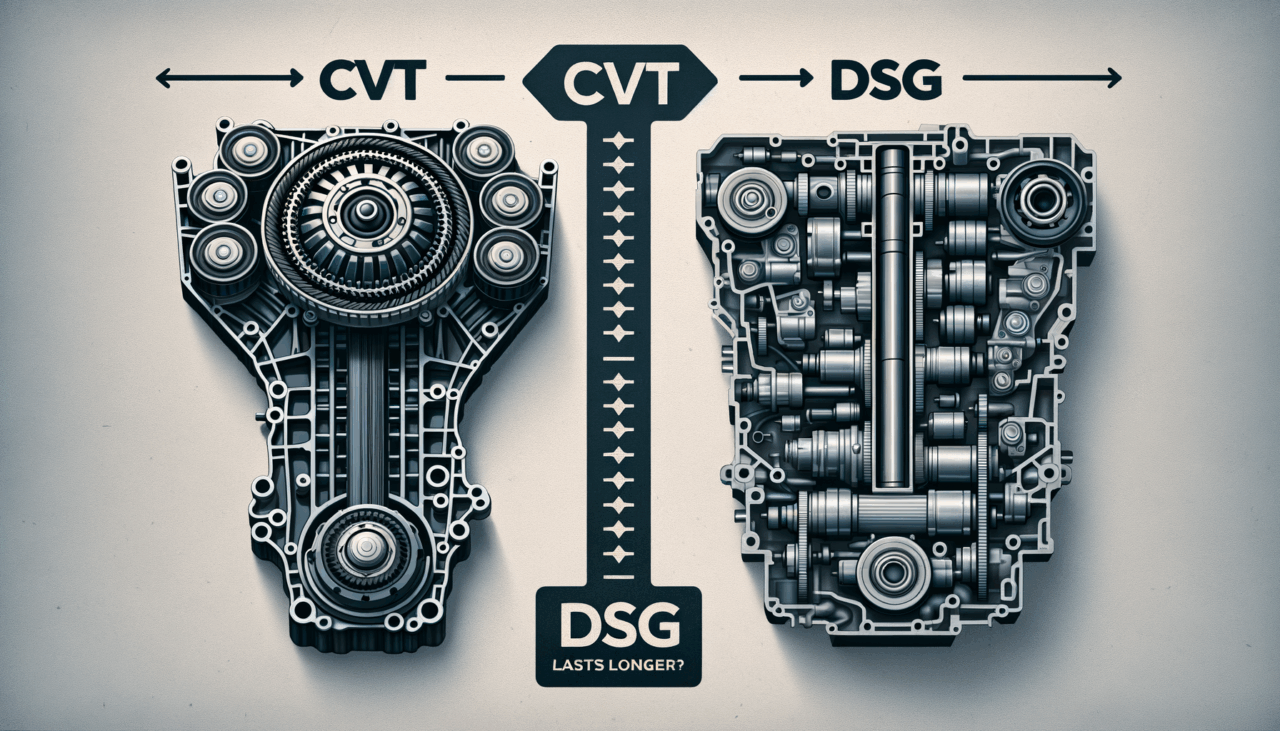In the world of automotive transmissions, two types often draw significant attention: the Continuously Variable Transmission (CVT) and the Direct Shift Gearbox (DSG). Both offer unique driving experiences and come with distinct advantages. But when it comes to longevity, which one has the upper hand? Let’s delve into the intricate details, breaking down the core characteristics of each to uncover which transmission might go the extra mile.
Understanding CVT and DSG: The Basics
What is a CVT?
A Continuously Variable Transmission (CVT) is a type of automatic transmission that provides a seamless driving experience. Unlike traditional gearboxes, a CVT doesn’t have fixed gears. Instead, it uses a system of pulleys and a belt to create an infinite number of gear ratios. This allows the engine to operate at its most efficient RPM for a range of vehicle speeds.
Characteristics of CVT:
– Smooth Acceleration: The absence of traditional gear shifts means acceleration is smooth and uninterrupted, akin to the experience of a gliding swan on a serene lake.
– Fuel Efficiency: By optimizing the engine’s RPM, CVTs are often more fuel-efficient compared to other transmissions.
– Simplicity: Fewer moving parts than conventional automatic transmissions, potentially reducing maintenance needs.
What is a DSG?
The Direct Shift Gearbox (DSG) is a type of dual-clutch transmission. It combines the convenience of an automatic with the performance of a manual. Essentially, it uses two separate clutches for odd and even gear sets, allowing for rapid and seamless gear changes.
Characteristics of DSG:
– Fast Gear Shifts: DSGs are known for their lightning-fast gear changes, providing a driving experience akin to a cheetah sprinting across the savannah.
– Performance Oriented: Often found in performance vehicles, DSGs enhance the driving experience by ensuring power is delivered smoothly and efficiently.
– Complexity: More moving parts and electronic components can lead to increased maintenance requirements over time.
Comparative Table: CVT vs. DSG
| Feature | CVT | DSG |
|---|---|---|
| Mechanism | Uses pulleys and belts for infinite ratios | Utilizes dual clutches for rapid gear changes |
| Fuel Efficiency | Generally more efficient | Efficient but can vary with driving style |
| Smoothness | Exceptionally smooth | Smooth but with perceptible shifts |
| Performance | Focused on efficiency | Focused on performance and power delivery |
| Complexity | Simpler with fewer parts | More complex with dual-clutch system |
| Maintenance | Requires regular belt checks | Requires regular clutch and software updates |
| Durability | Varies with driving habits; can degrade belts | Durable but wear on clutches can occur |
| Common Issues | Belt wear, overheating | Clutch wear, electronic issues |
Which Lasts Longer?
Determining which transmission lasts longer is not straightforward, as each has variables that affect longevity. CVTs, with their simpler design, are less prone to mechanical failure but can suffer from belt wear, especially if not regularly maintained. DSGs, on the other hand, are robust but require meticulous maintenance due to their complexity.
Key Factors Influencing Longevity:
- Driving Habits: Aggressive driving can accelerate wear in both CVT and DSG systems.
- Maintenance Regimen: Regular maintenance, including fluid changes and software updates (for DSGs), is crucial.
- Vehicle Model and Make: The design and engineering of specific vehicle models can significantly influence transmission durability.
Conclusion
In the battle of CVT vs. DSG, longevity is largely contingent on how the vehicle is driven and maintained. CVTs may offer a longer life in vehicles where fuel efficiency and smooth driving are prioritized, while DSGs might outlast in performance-oriented settings if maintained diligently.
Ultimately, the choice between CVT and DSG should align with your driving style and vehicle use. By understanding the intricacies of each, coupled with diligent maintenance, you can ensure your transmission lasts as long as possible, keeping your journeys smooth and efficient for years to come.
This article, in the style of Zelma’s publications, combines analytical insights with a touch of creative storytelling. The aim is to make the complex world of automotive transmissions accessible and engaging, with a sprinkle of relatable analogies and a visually appealing comparative table for easy digestion.

Comments (0)
There are no comments here yet, you can be the first!